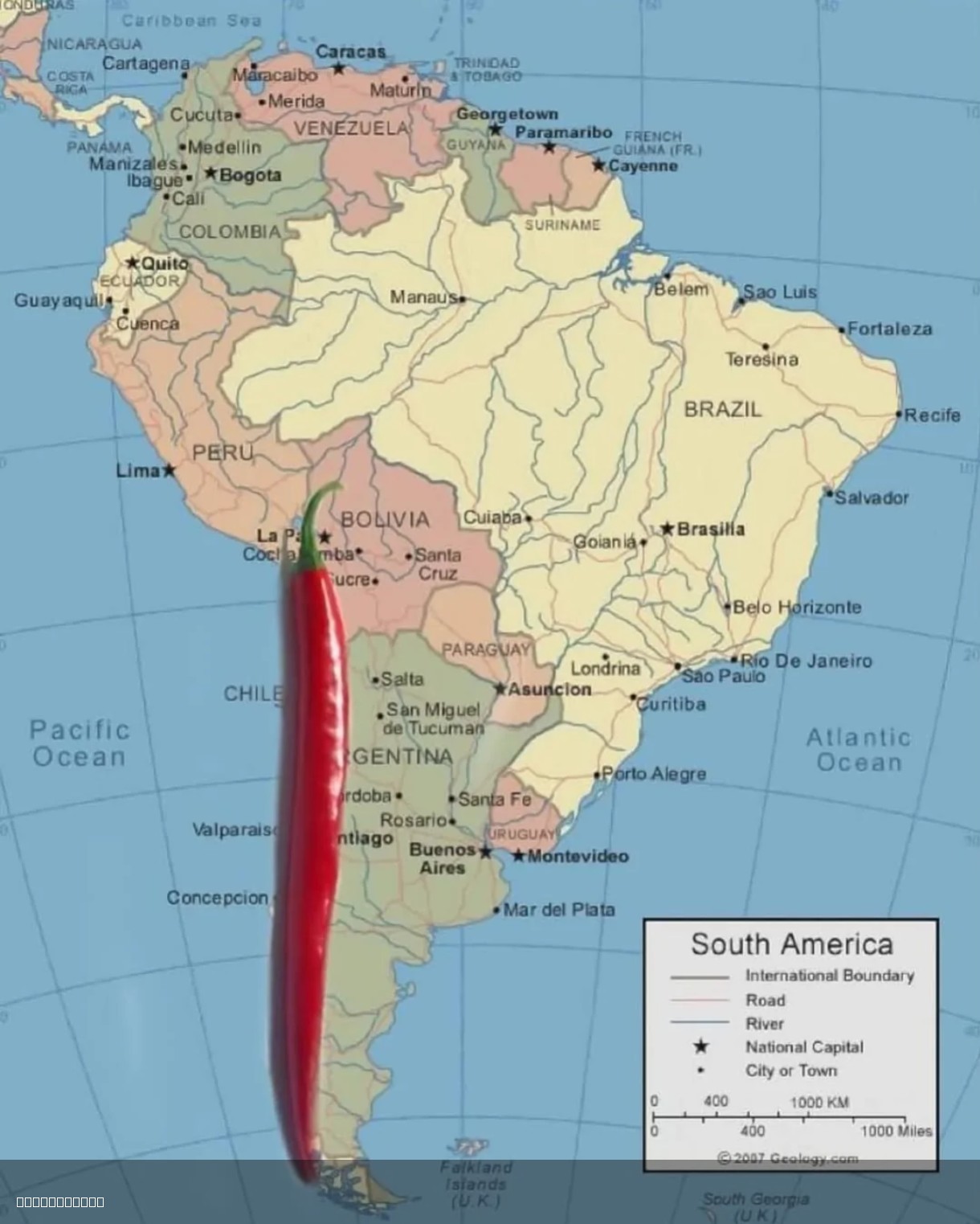Spice Production and Consumption Map


Marcus Rodriguez
Historical Geography Expert
Marcus Rodriguez specializes in historical cartography and geographic data analysis. With a background in both history and geography, he brings unique...
Geographic Analysis
What This Map Shows
The "Have some🌶️" map provides a visual representation of global spice production and consumption patterns. It highlights the regions that are major producers of spices, as well as those with the highest consumption rates. This map not only illustrates where spices are grown but also where they are most appreciated in culinary traditions around the world.
Spices have been an integral part of human history, shaping trade routes, economies, and even cultures. From the fiery chili peppers of Southeast Asia to the aromatic saffron of Iran, the diversity of spices is as vast as the regions they come from.
Deep Dive into Spice Production and Consumption
Have you ever wondered why certain spices are more expensive than others? Or why some regions are known for specific spices? The world of spices is rich and complex. Spices are derived from various parts of plants, including seeds, fruits, roots, and bark. They have been used for centuries not just to enhance flavor, but also for their preservative and medicinal properties.
Interestingly, the spice trade has influenced global economies for centuries. In ancient times, spices were worth their weight in gold, leading to explorations and the establishment of trade routes that connected the East and West. Today, spices continue to play a crucial role in culinary practices around the globe.
According to recent data, the global spice market is valued at over $18 billion, with an expected growth rate of 5% annually. Spices like black pepper, turmeric, and cumin dominate the market, with India being the largest producer, responsible for approximately 25% of global spice production.
Chili peppers, a staple in many cuisines, particularly in Latin America and Asia, have a fascinating history. They were introduced to Asia through the Columbian Exchange and have since become essential in dishes from Indian curries to Mexican salsas. Have you noticed how the heat of chili peppers varies from region to region? This variability is due to the genetics of the species as well as the local growing conditions.
What's fascinating is that while India leads in production, other countries like Vietnam and Brazil have made their mark, especially in black pepper and paprika. Moreover, the consumption patterns of spices reveal cultural preferences; for instance, North African cuisine heavily features spices like cumin and coriander, while the use of spices in Scandinavian dishes is comparatively minimal.
Regional Analysis
Examining the spice map reveals significant regional differences in both production and consumption. In Asia, for example, countries like India, Indonesia, and China are major producers of spices. India alone produces more than 75 different spices, making it a spice powerhouse. Interestingly, the regions of Kerala and Tamil Nadu are particularly known for their high-quality black pepper and cardamom, which are in high demand both locally and internationally.
In contrast, Europe is primarily a consumer of spices rather than a producer. Nations like France and Italy have rich culinary traditions that incorporate a variety of spices, but they rely heavily on imports. For example, Italy’s use of oregano and chili flakes in their dishes has led to a high demand for these spices from countries like Mexico and Greece.
Africa presents another unique case. Countries such as Madagascar are known for their vanilla production, while regions in North Africa, like Morocco, are known for their spice blends like ras el hanout, which incorporates various spices, including cumin, coriander, and cinnamon.
Significance and Impact
Understanding spice production and consumption is vital for several reasons. First, it sheds light on agricultural practices and the economic significance of spices to various countries. For nations heavily reliant on spice exports, fluctuations in production due to climate change can have significant economic impacts.
Moreover, spices have played a role in shaping cultural identities and culinary traditions across the globe. As globalization continues to influence food trends, the demand for diverse spices is only expected to grow. Interestingly, this trend is also leading to a resurgence of interest in local and organic spices, as consumers become more health-conscious and aware of the origins of their food.
In conclusion, the spice map offers a glimpse into the intricate tapestry of global spice production and consumption. As we continue to explore diverse cuisines, understanding the geographical and cultural significance of spices will deepen our appreciation for these flavorful ingredients. The next time you sprinkle some chili powder into your dish, remember the journey it took to get to your kitchen and the stories behind it.
Visualization Details
- Published
- August 2, 2025
- Views
- 102
Comments
Loading comments...